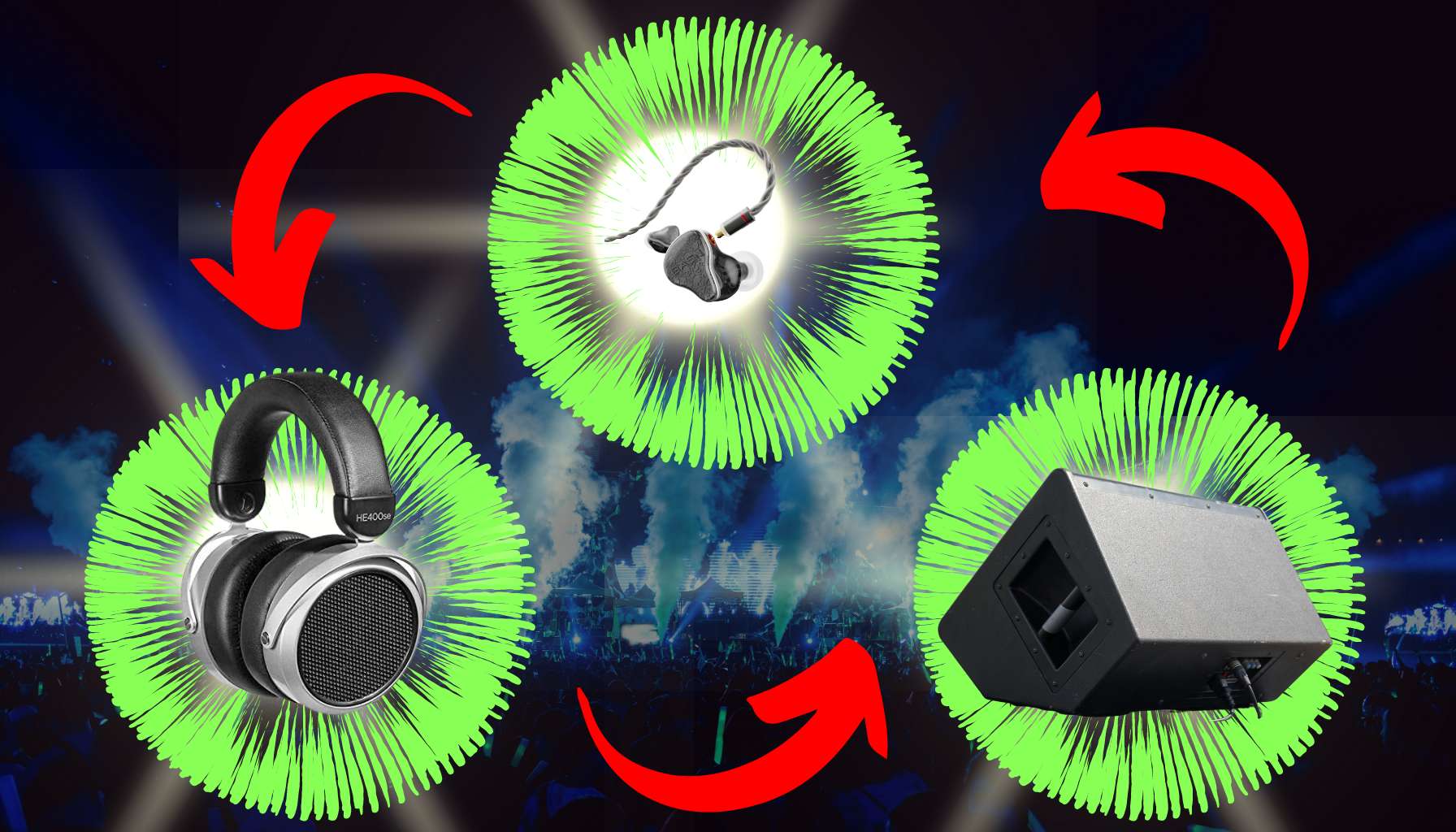Introduction to Microphones
The Role of Microphones in Audio Production
Microphones are essential tools in the realm of audio production, acting as the translators of sound waves into electrical signals. They are critical for capturing the subtleties and nuances of live performances, studio recordings, and broadcasts. The microphone’s quality and characteristics significantly influence the fidelity and authenticity of the audio captured, thus impacting the overall experience for both the artist and the audience.
The Evolution of Microphone Technology
Over the years, microphone technology has evolved significantly, from the early carbon microphones to the modern condenser, dynamic, and ribbon types. This evolution has been driven by the constant pursuit of clearer, more accurate sound reproduction and the need for devices that can perform well under various conditions, such as handling high sound pressure levels or reducing background noise.
Importance of Choosing the Right Type of Microphone
Selecting the right type of microphone for each situation is paramount. Different environments and applications require different microphone characteristics. For instance, studio settings often call for detailed and sensitive mic types, while live performance environments need durable and feedback-resistant mics. Understanding the strengths and limitations of each microphone type helps in making informed decisions that enhance audio quality.
The Basic Mechanism of Microphones
Transducer Principle: Converting Sound to Electrical Signals
Microphones work on the transducer principle, where they convert acoustic energy (sound waves) into electrical energy (audio signal). The microphone’s diaphragm vibrates in response to sound pressure, which is then transformed into an electrical current that can be amplified, recorded, or broadcast.
Directionality: How Microphones Capture Sound from Different Angles
The directionality of a microphone, or its polar pattern, determines how it picks up sound from various angles. Some microphones are designed to capture sound from all directions (omnidirectional), while others focus on a specific area (unidirectional), providing options for isolating sounds from the desired source or minimizing ambient noise.
Frequency Response: Understanding How Microphones React to Various Sound Frequencies
Frequency response refers to how a microphone responds to different frequencies of sound. Some mics have a flat response for accurate reproduction, while others may enhance or roll off certain frequencies to complement specific sources, like vocals or instruments, hence impacting the clarity and balance of the audio.
Different Categories of Microphones Based on Transducer Type
Dynamic Microphones
Construction and Characteristics
Dynamic microphones use a magnetic field created by a wire coil and a diaphragm attached to a moving magnet. They are rugged, reliable, and capable of handling high sound pressure levels, making them suitable for loud environments.
Common Applications and Usage
These microphones are often used for live performances, capturing drums, electric guitars, and onstage vocals due to their durability and feedback resistance.
Advantages and Disadvantages
Advantages include their toughness and ability to handle varying sound levels without distortion. The primary disadvantage is a limited frequency response compared to other mic types.
Condenser Microphones
Construction and Characteristics
Condenser microphones use a thin, conductive diaphragm placed close to a backplate, forming a capacitor that vibrates in response to sound, requiring phantom power. They are known for their sensitivity and accuracy.
Common Applications and Usage
These mics are preferred in studio environments for capturing vocals, acoustic instruments, and any source where detail and clarity are paramount.
Advantages and Disadvantages
The advantages include high sensitivity and a broad frequency response. The disadvantages are their fragility and the need for external power.
Ribbon Microphones
Construction and Characteristics
Ribbon microphones contain a thin aluminum ribbon that moves within a magnetic field to generate a signal. They are prized for their natural and warm sound.
Common Applications and Usage
Ribbon mics are often used in studios for mellow-sounding sources like vocals and string instruments, as well as for overhead drum miking and capturing room ambience.
Advantages and Disadvantages
Advantages include their warm, smooth sound and figure-8 polar pattern. Disadvantages involve their fragility and lower output level.
Understanding Polar Patterns in Microphones
Omnidirectional Microphones
Usage and Characteristic Sound
Omnidirectional microphones capture sound from all directions, making them ideal for recording ambient sounds or when the direction of the sound source is variable.
Benefits and Drawbacks
Benefits include consistent capture of sound without positioning concerns. Drawbacks involve the potential for background noise intrusion.
Cardioid Microphones
Usage and Characteristic Sound
Cardioid microphones capture sound primarily from the front with reduced sensitivity at the sides and rear, which helps isolate the sound source from unwanted background noise.
Benefits and Drawbacks
Benefits include their ability to focus on the sound source and exclude ambient noise. The main drawback is the potential for the proximity effect, which increases bass response when close to the source.
Bi-Directional/Figure-8 Microphones
Usage and Characteristic Sound
Bi-directional microphones pick up sound from the front and back while rejecting sounds from the sides, suitable for capturing two sources or a source with room ambience.
Benefits and Drawbacks
Benefits include the ability to pick up two sources simultaneously. The drawback is that they can pick up unwanted noise from the front and back.
Shotgun and Lobar Microphones
Usage and Characteristic Sound
Shotgun microphones have a highly directional pickup pattern that isolates sound from a distance, making them suitable for film and theatre applications.
Benefits and Drawbacks
Benefits include their focus on distant sound sources. Drawbacks are their narrow field of capture and the potential for off-axis coloration.
Specialty Microphones and Their Applications
Lavalier/Lapel Microphones
Design and Functionality
Lavalier microphones are small, clip-on mics designed for hands-free operation, offering discreet audio capture for on-camera appearances, interviews, and stage performances.
Optimal Usage Scenarios
They’re best used for television, theatre, public speaking, and situations where a less visible microphone is desirable.
Shotgun Microphones
Design and Functionality
Shotgun microphones are designed with a long interference tube that enhances directional pickup, making them ideal for capturing audio from a particular direction while minimizing side and rear noise.
Optimal Usage Scenarios
Commonly used in film production, wildlife recording, and situations where the microphone cannot be placed close to the sound source.
Boundary/PZM Microphones
Design and Functionality
Boundary mics are placed on a surface and use the reflection of sound from that surface to capture audio, providing a natural and phase-coherent sound.
Optimal Usage Scenarios
They are suitable for boardrooms, theaters, and recording situations where an inconspicuous mic is needed.
USB Microphones
Design and Functionality
USB microphones are plug-and-play devices that connect directly to a computer’s USB port, often used by podcasters and streamers for their convenience and ease of use.
Optimal Usage Scenarios for Podcasters and Streamers
Ideal for home studios, voice-over work, podcasting, and other multimedia applications where portability and simple setup are prioritized.
Choosing the Right Microphone for Different Environments
Studio Recording Microphones
In-studio recordings, condenser microphones are typically preferred due to their detailed sound capture for nuanced performances, particularly for vocals and acoustic instruments.
Live Performance Microphones
For live performances, dynamic microphones are favored for their ruggedness and ability to cope with high sound pressure levels, making them the go-to choice for capturing vocals and instruments in a high-energy environment.
Field Recording Microphones
Field recordings require microphones that can handle environmental challenges. Small diaphragm condenser mics that are resilient and offer clear audio capture are commonly used for recording natural sounds and outdoor events.
Broadcast Microphones
In broadcasting, large-diaphragm dynamic microphones are often selected for their smooth response and ability to reject plosives and sibilance, providing clear and intimate voice capture for radio and TV.
Microphone Accessories and Their Impact on Performance
Pop Filters and Windshields
Pop filters and windshields protect microphones from plosives and wind noise, respectively, ensuring clean and intelligible audio capture. They are vital for both studio and outdoor recordings to maintain recording quality.
Shock Mounts
Shock mounts isolate microphones from vibrations and handling noise, preventing unwanted rumble and preserving the purity of the recorded audio.
Mic Stands and Booms
Mic stands and boom arms provide stable and adjustable support for microphones, allowing optimal placement for various recording situations and enhancing the ease of use.
Cables and Connectors
High-quality cables and connectors are essential for maintaining signal integrity between the microphone and recording equipment. They ensure a clear, clean connection that translates to better sound quality.
Maintenance and Care for Microphones
Once we’ve wrapped our heads around the joys of accessories, it’s time to shift towards the nuts and bolts – or, in this case, the diaphragms and grilles – of microphone maintenance and care. Stick around as we learn how to pamper our precious mics. We’ll teach you to scrub and store, to troubleshoot and tend, ensuring your microphone continues to relay your truth to the world, without a crackle or a cough, or a sibilant “s” out of place.
Cleaning and Storage Best Practices are the TLC your microphones need. Your mic is your voice’s best friend – and you wouldn’t ignore a friend’s cry for a spa day, would you? Plus, common mic issues are easier to face when you’re not up against an army of dust bunnies holding your microphone captive. In the longevity game, cleaning is as crucial as the mic music magic itself.
As we lay out maintenance tips and longevity hacks, we create a sanctuary for our microphones, where they are treated with the respect they deserve. Like a seasoned mechanic with a classic car, we’ll tune our mics to purr and perform at their peak, because a well-maintained mic is a happy mic. And a happy mic makes for an even happier sound engineer.
So stick around as we dive headfirst into microphone upkeep, cradling our audio wands with the care of a museum curator handling a priceless artifact. Because that’s what they are – our tools for capturing the nuances of sound, the whispers of the soul, the booming announcements of existence. They’re not just pieces of tech. They’re the narrators of our auditory story, and it’s our job to keep them talking.
Cleaning and Storage Best Practices
Regular cleaning and proper storage of microphones are crucial for their upkeep. It helps to avoid damage from dust, moisture, and other environmental factors that could degrade the microphone’s performance.
Troubleshooting Common Mic Issues
Understanding how to troubleshoot common microphone issues like noise, distortion, and reduced sensitivity can save time and ensure uninterrupted recording sessions.
Longevity and Durability Tips
With careful maintenance and handling, microphones can have a long life span. Tips on care, usage, and storage can prevent wear and tear and preserve the microphone’s sound quality over time.
Conclusion
Recapping the Importance of Selecting the Right Microphone
Choosing the appropriate microphone is crucial for achieving the desired sound quality. Different scenarios call for different microphone characteristics, and matching the mic to the environment can make a significant difference in audio production.
The Future of Microphone Technology and Innovations
As technology advances, we can expect to see further innovations in microphone design and functionality, from improvements in sound quality to the integration of smart features.
Frequently Asked Questions
What are the most notable differences between dynamic and condenser microphones?
The most notable differences lie in their construction and intended usage. Dynamic mics are typically more rugged and handle high sound pressure well, making them ideal for live performances. Condenser mics are more sensitive and provide a higher level of detail, preferred in studio settings but require phantom power.
Can one microphone be suitable for all recording purposes?
No, there’s no one-size-fits-all microphone, as different situations demand different microphone characteristics such as sensitivity, durability, and polar patterns.
Why do different polar patterns matter when recording audio?
Different polar patterns affect how a microphone picks up sound. Choosing the right pattern can isolate the desired sound source, minimize background noise, and control the ambiance captured during the recording.
How do I choose a microphone for a home studio versus a professional studio?
For a home studio, consider a USB or condenser microphone for its ease of use and clarity. In a professional studio, a range of microphones, including large-diaphragm condensers and dynamics, would be ideal based on the source material and recording conditions.
What is phantom power, and which microphones require it?
Phantom power is a method of providing power to condenser microphones through a balanced microphone cable. It’s necessary because condenser mics have active circuitry that requires electricity to operate.
How can I prevent feedback when using microphones during live performances?
To prevent feedback, ensure proper microphone and speaker placement, use directional microphones to reduce the pickup of ambient sound, and manage sound levels carefully.
What are some common mistakes to avoid when placing microphones for recording?
Common mistakes include placing the microphone too close or too far from the source, not considering the polar pattern, and not using appropriate shock mounts or stands, leading to poor sound quality or noise interference.
How often should I maintain or service my microphone?
Regular inspection and cleaning after each use are recommended, with more thorough maintenance periodically depending on usage frequency and conditions.
What are the signs that a microphone is failing or needs to be replaced?
Signs include persistent noise, hum, decreased sensitivity, distortion, or intermittent signal loss. If a microphone shows these symptoms, it may require servicing or replacement.
–















